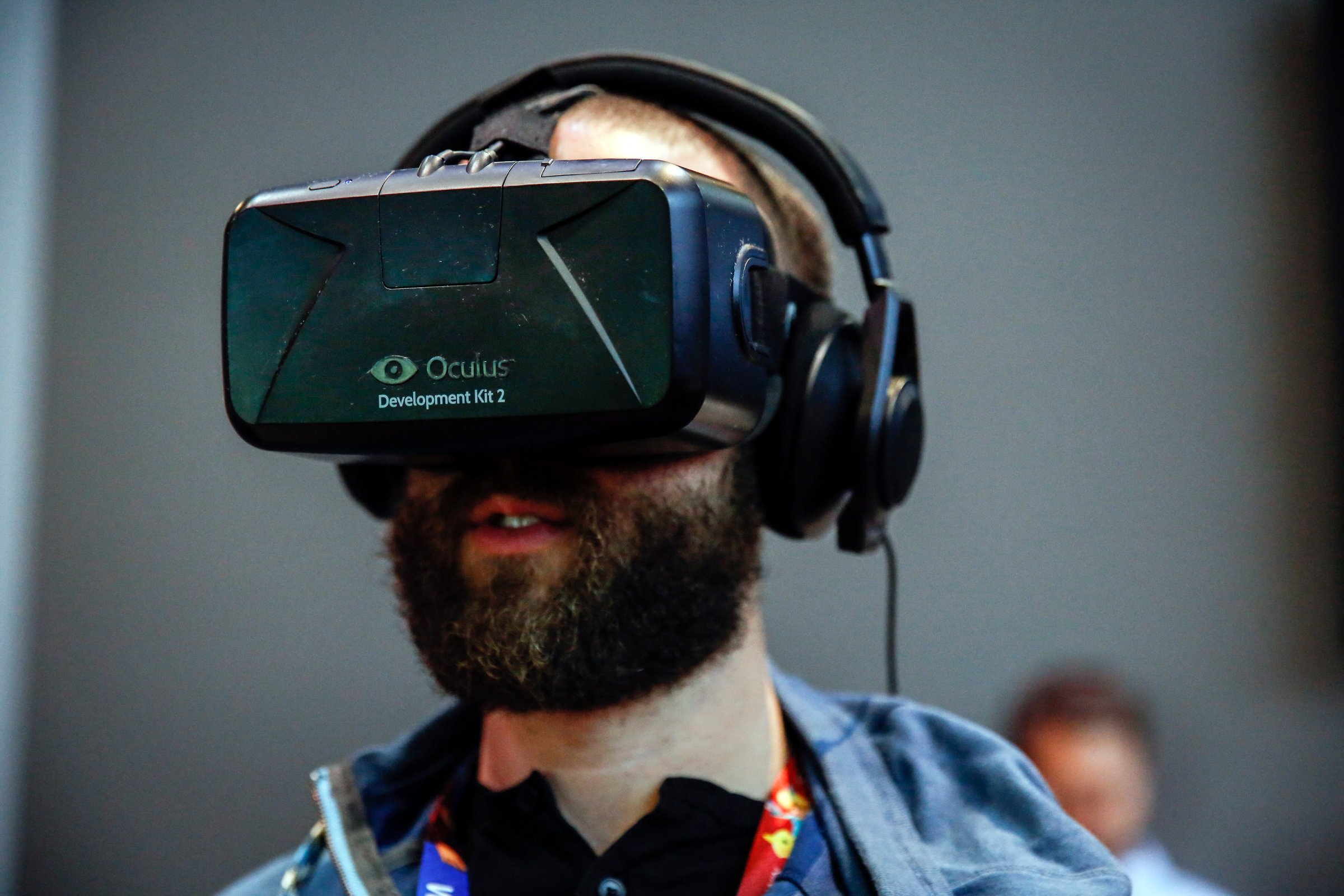
Facebook’s virtual reality arm, Oculus, may one day help people interact on the social network. The idea: use the technology to create a digital stand-in for users.
Researchers teamed up with Oculus found that they could read the smiles, frowns and other facial movements of people wearing the Oculus headset and then recreate them in an avatar. They theorized that Facebook could let users incorporate their doppelgangers into its service.
The researchers, including from University of Southern California, hung a 3D camera from an Oculus Rift headset to monitor the person wearing it. The software scanned the person’s facial expressions and copied them onto a digital stand-in, whose head moved and reacted as if alive.
As Pfsk noted, one of the biggest challenges is that the Oculus headset covers the upper half the face (the headset resembles big ski goggles). The team worked around this by attaching eight sensors to the foam liner inside the headset. The team then used software to capture the facial movements of the muscles under the headset, and combined that data with what the camera collected.
Facebook hasn’t gone into detail about how it plans to use the Oculus headsets after they become publicly available in 2016. But the gaming industry is particularly interested in the technology because of its ability to enhance interactivity. Digital chatting could also be a good fit. People in different places could talk in virtual face-to-face exchanges, although it’s unclear how that would be an improvement over video chatting.
Founded in 2012, Oculus first raised $2.4 million via a crowdfunding campaign on Kickstarter, before raising an additional $91 million in venture capital. Facebook acquired the company in 2014 for $2 billion.
More Must-Reads From TIME
- The 100 Most Influential People of 2024
- Coco Gauff Is Playing for Herself Now
- Scenes From Pro-Palestinian Encampments Across U.S. Universities
- 6 Compliments That Land Every Time
- If You're Dating Right Now , You're Brave: Column
- The AI That Could Heal a Divided Internet
- Fallout Is a Brilliant Model for the Future of Video Game Adaptations
- Want Weekly Recs on What to Watch, Read, and More? Sign Up for Worth Your Time
Contact us at letters@time.com